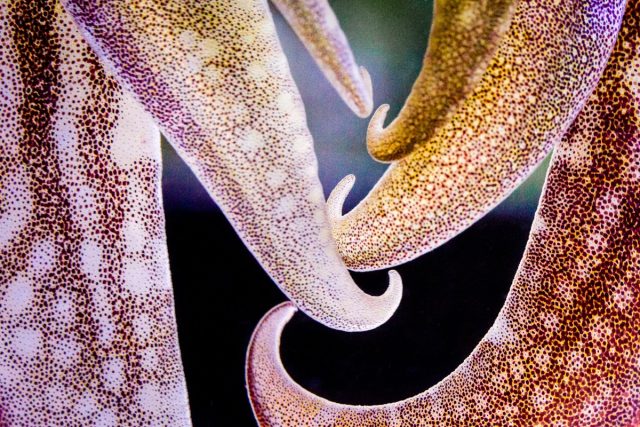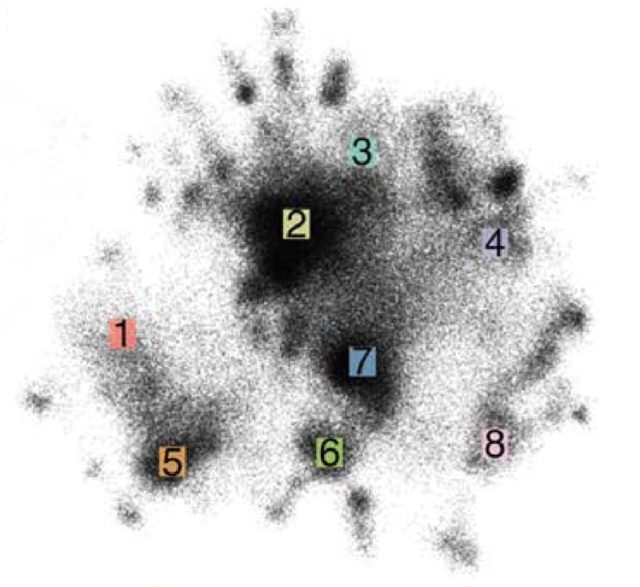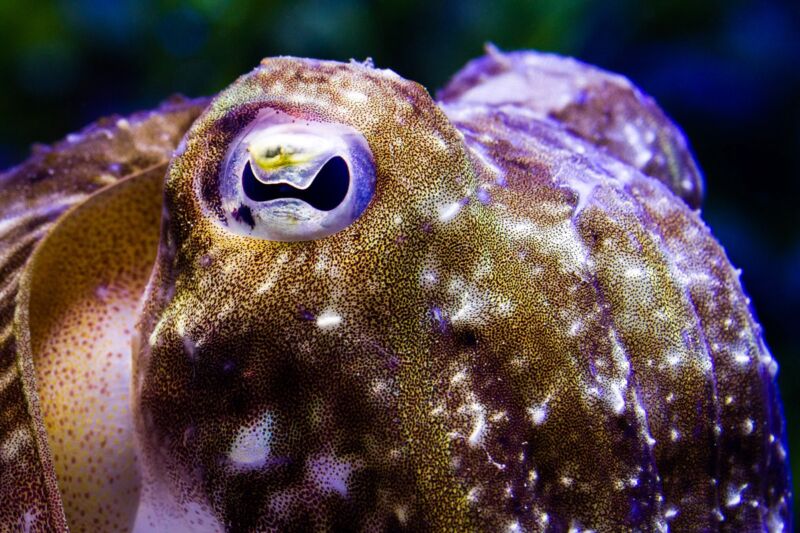They receive constant feedback about their skin pattern and adjust camouflage accordingly.
It's well known that cuttlefish and several other cephalopods can rapidly shift the colours in their skin thanks to that skin's unique structure. But according to a new paper published in the journal Nature, the process by which cuttlefish generate those camouflage patterns is significantly more complex than scientists previously thought.
“Prior research suggested that cuttlefish only had a limited selection of pattern components that they would use to achieve the best match against the environment," said co-author Sam Reiter of the Okinawa Institute of Science and Technology (OIST). "But our latest research has shown that their camouflaging response is much more complicated and flexible—we just hadn’t been able to detect it, as previous approaches were not as detailed or quantitative.” Their quantitative approach combined high-resolution video with machine learning to investigate not just camouflage patterns but the related process of "blanching" in response to threats.
Cuttlefish and their fellow cephalopods are fascinating creatures. For instance, a 2021 study showed that cuttlefish can delay gratification. Specifically, they could pass a cephalopod version of the famous Stanford marshmallow test: waiting a bit for their preferred prey rather than settling right away for a less desirable prey. Cuttlefish also performed better in a subsequent learning test—the first time such a link between self-control and intelligence has been found in a non-mammalian species. Cuttlefish also seem to exhibit a form of episodic memory, but unlike humans, their capability doesn't decrease as they age.
As for the camouflage ability, we previously reported that squid skin is translucent and features an outer layer of pigment cells called chromatophoresthat control light absorption. Each chromatophore is attached to muscle fibres that line the skin's surface, and those fibres, in turn, are connected to a nerve fibre. It's a simple matter to stimulate those nerves with electrical pulses, causing the muscles to contract. And because the muscles are pulling in different directions, the cell expands, along with the pigmented areas, changing the colour. When the cell shrinks, so do the pigmented areas.
The common cuttlefish camouflages against a natural background. Credit: Theodosia Woo, MPI Brain Research
Underneath the chromatophores, there is a separate layer of iridophores. Unlike the chromatophores, the iridophores aren't pigment-based but are an example of structural colour, similar to the crystals in the wings of a butterfly, except a squid's iridophores are dynamic rather than static. They can be tuned to reflect different wavelengths of light. A 2012 papersuggested that this dynamically tunable structural colour of the iridophores is linked to a neurotransmitter called acetylcholine. The two layers work together to generate the unique optical properties of squid skin.
And then there are leucophores, which are similar to the iridophores, except they scatter the full spectrum of light, so they appear white. They contain reflectin proteins that typically clump together into nanoparticles so that light scatters instead of being absorbed or directly transmitted. Leucophores are mostly found in cuttlefish and octopuses, but there are some female squid of the genus Sepioteuthis that have leucophores that they can 'tune" to only scatter certain wavelengths of light. If the cells allow light through with little scattering, they’ll seem more transparent, while the cells become opaque and more apparent by scattering a lot more light.

Cuttlefish skin is translucent and features an outer layer of pigment cells called chromatophores
that control light absorption. Iridophores provide structural color, while leucophores scatter the
full spectrum of light.
Stephan Junek, Max Planck Institute for Brain Research
Reiter et al. wanted to take a closer look at exactly how the cuttlefish achieves different skin patterns. Prior research indicated that the cuttlefish use vision to assess their environment, interpreted by tens of thousands of motoneurons that coordinate and control the activity of the chromatophores—a process that would not require any kind of feedback mechanism, and hence the cuttlefish would have no possibility of correction.
The team had just developed new methods of tracking the expansion of tens of thousands of chromatophores at once and were able to further improve on those methods for this latest study. They used an array of ultra-high-resolution cameras to film cuttlefish (Sepia officinalis) in the lab, zooming in closely on the skin. The cuttlefish were placed in environments with various backgrounds, and the cameras captured the gradual transitions between different camouflage skin patterns in response in real time. That yielded data from roughly 200,000 images of the skin patterns, which were then subjected to computational analysis.
Reiter and his co-authors used a neural network to examine different elements of those images: brightness, roughness, structure, shape, and contrast, for instance. The resulting patterns were then mapped onto a "skin pattern space." The same process was used to analyze images of the background environment so the researchers could determine how well the cuttlefish had matched the patterns they were trying to mimic.

Each black dot represents a skin pattern produced by a single cuttlefish.
OIST and MPI/CC BY-NC
The result: Cuttlefish readily adapted their skin patterns to match the different backgrounds, whether natural or artificial, and the neural network analysis picked up subtle differences in the resulting skin patterns when cuttlefish were exposed to the same background several times. And the creatures didn't follow the same transitional pathway every time, often pausing in between. That means that contrary to prior assumptions, feedback does seem to be critical to the process, and the cuttlefish were indeed correcting their patterns to match the backgrounds better.
“The cuttlefish would often overshoot their target skin pattern, pause, and then come back,” said co-author Theodosia Woo, a graduate student at the Max Planck Institute for Brain Research. “In other words, cuttlefish don’t simply detect the background and go straight to a set pattern. Instead, it is likely that they continuously receive feedback about their skin pattern and use it to adjust their camouflage. Exactly how they receive that feedback—whether they use their eyes or whether they have a sense of how contracted the muscles around each chromatophore are—we don’t yet know.”
Reiter et al. also studied how a cuttlefish turns pale when threatened, called "blanching." This process happened quickly and directly, and high-resolution images showed that the blanching is superimposed on the camouflage pattern. The authors believe this is evidence that a separate neural circuit in the brain controls blanching. It's as if a threat sparks a response that overrides the signal to camouflage, at least temporarily. The team plans to take neural recordings of cuttlefish brains during camouflage and blanching to learn more.
DOI: Nature, 2023. 10.1038/s41586-023-06259-2 (About DOIs).
Source



3175x175(CURRENT).thumb.jpg.b05acc060982b36f5891ba728e6d953c.jpg)


Recommended Comments
There are no comments to display.
Join the conversation
You can post now and register later. If you have an account, sign in now to post with your account.
Note: Your post will require moderator approval before it will be visible.